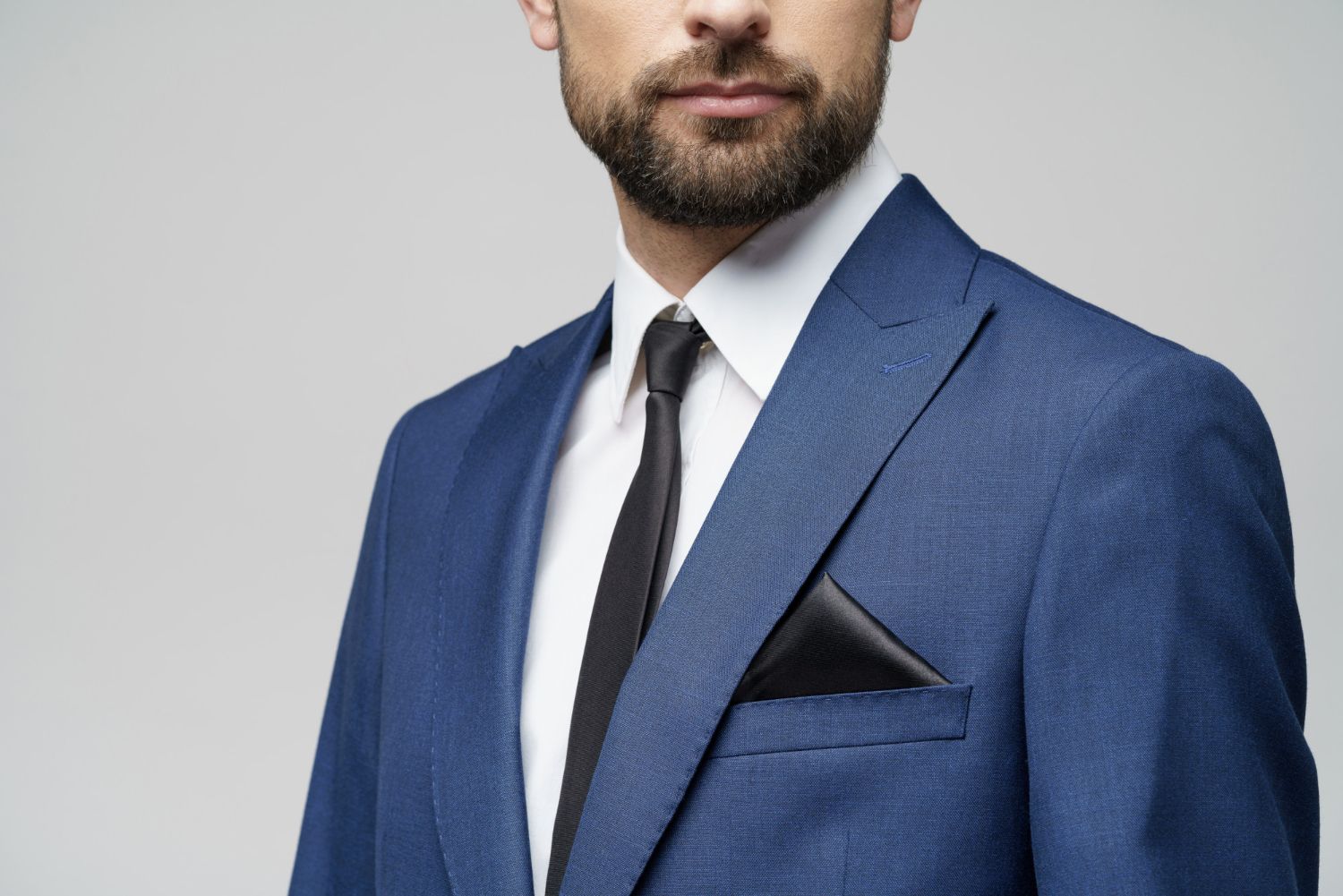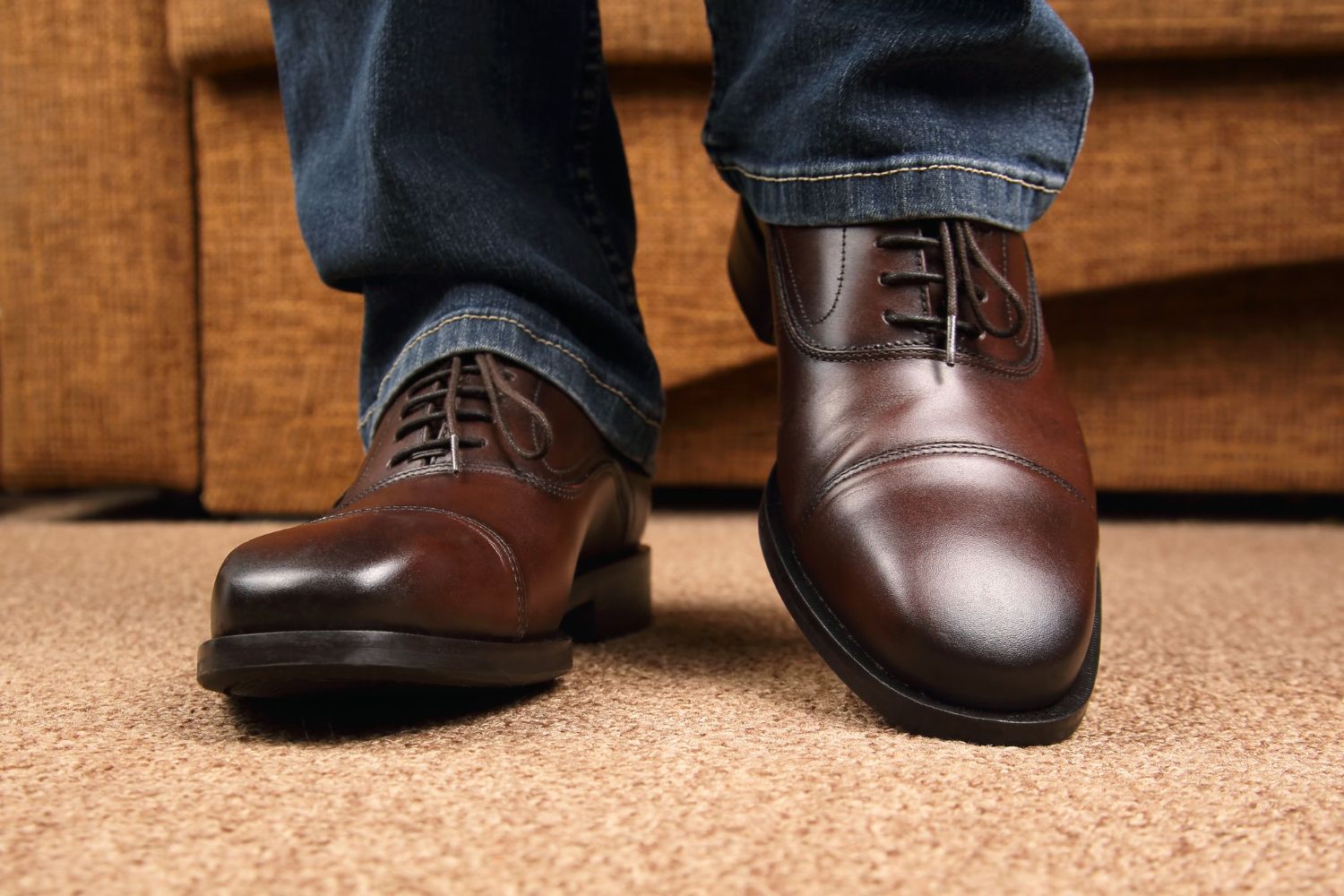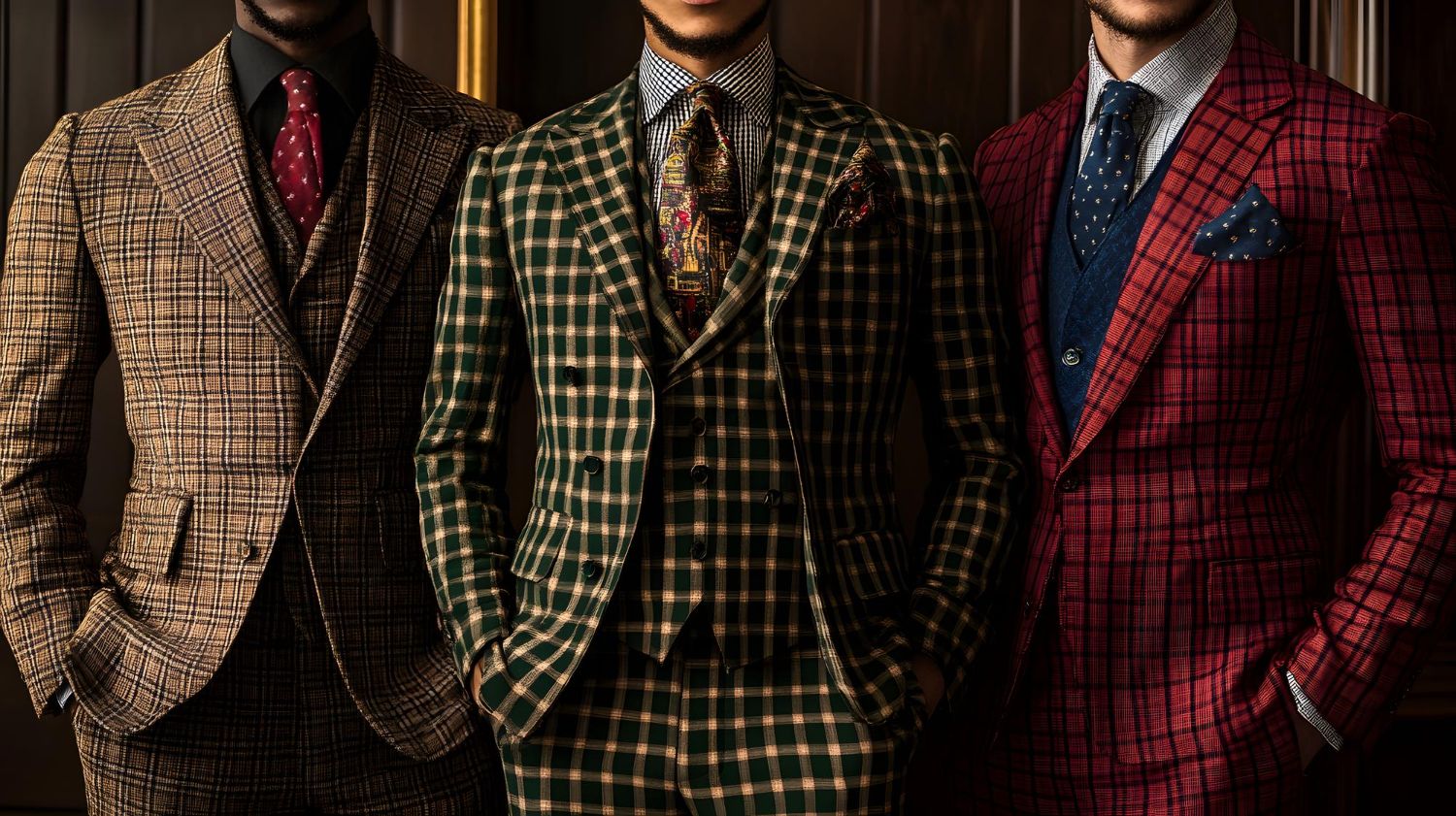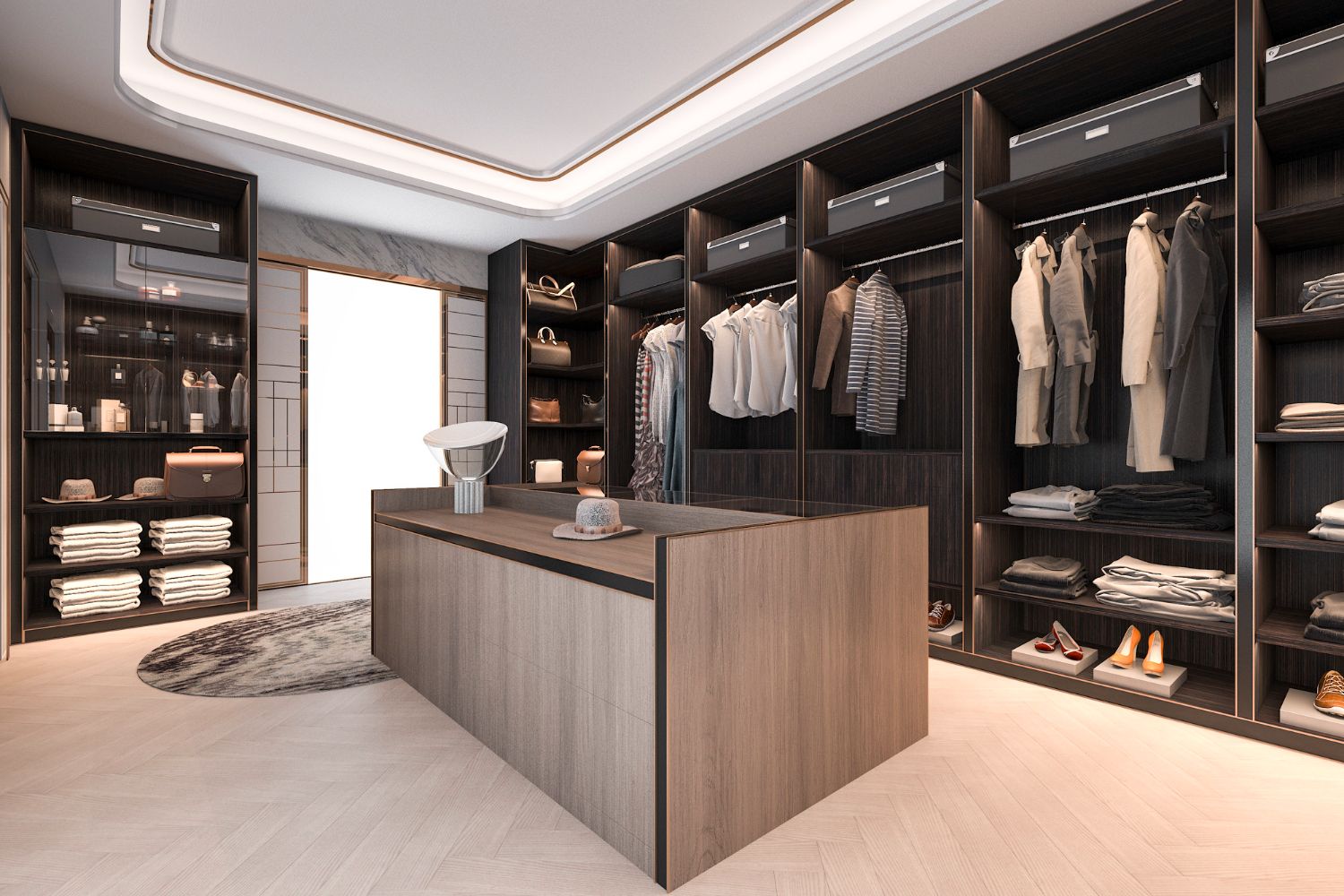Getting dressed for the office shouldn't feel like solving a puzzle every morning. But for a lot of guys figuring out what to wear to work is genuinely stressful. You want to look professional and feel comfortable and you definitely don't want to be that guy who shows up either overdressed or underdressed.
I've spent years navigating different office dress codes from full suits to business casual to the dreaded smart casual that nobody really understands. Once you nail down the essentials it becomes way easier. You stop overthinking it and start getting compliments on how put together you look.
So let's break down the seven key ideas that will transform your work wardrobe from confusing to confident.

If you're going to invest in one single piece for your professional wardrobe make it a navy suit. Not black because that's too formal for most office situations. Not grey yet because we'll get there. But a classic well-constructed navy suit.
Why navy? Because it's the most versatile color in men's suiting. It works for client meetings and presentations and interviews and even weddings on the weekend. You can dress it up with a crisp white shirt and tie or dress it down with a casual button-down and no tie.
But here's the critical part. Fit is everything. A cheap suit that fits perfectly will always look better than an expensive one that doesn't. The shoulders should sit right at your shoulder line without any bunching or drooping.
The jacket should button comfortably without pulling at the fabric. The pants should have a slight break at your shoes not pooling around your ankles or sitting too high. Get your suit tailored because this isn't optional.
Even if you buy something that fits pretty well off the rack a tailor can make small adjustments that transform it from good to great. Hem the pants to the perfect length and take in the waist slightly and adjust the sleeve length. These details matter way more than most guys realize.
For shirts underneath your navy suit stick with white or light blue for the most professional look. These colors are timeless and they let the suit do the talking. Add a silk tie in a complementary color if you're going full formal or skip the tie and leave the top button undone for a more relaxed vibe.

2. Business Casual: Dress Pants and Button-Downs
Most modern offices operate on some version of business casual which means you don't need a full suit every day but you still need to look polished. This is actually the sweet spot for building a versatile work wardrobe.
Start with quality dress pants or chinos in neutral colors. Navy and charcoal grey and khaki and even dark olive all work well. These colors mix and match easily which means you can create multiple outfits without buying a ton of different pieces.
The fit here is just as important as with suits. Your pants should sit comfortably at your natural waist not hanging low on your hips. They should fit cleanly through the seat and thighs without being tight and taper slightly toward the ankle for a modern look.
Avoid anything too baggy or too skinny. You want that middle ground where everything looks intentional. Pair these with button-down shirts in various colors and subtle patterns.
Oxford cloth button-downs are perfect for this because they're durable and they look sharp and they can handle multiple wears between washes. Stock up on white and light blue and pink and maybe a subtle stripe or check pattern.
The beauty of business casual is the flexibility. You can roll up your sleeves when you're at your desk and throw on a blazer when you have a meeting or keep things simple with just the shirt and pants. It's professional without being stuffy which is exactly what most workplaces want these days.

3. The Versatile Blazer Collection
A good blazer is like a secret weapon for your work wardrobe. It instantly elevates whatever you're wearing underneath and gives you options for different situations throughout the day.
You need at least two blazers in your rotation. Start with navy which goes with almost everything and charcoal grey which provides nice contrast and works across seasons. If you want a third consider a subtle pattern like a windowpane check or herringbone that adds visual interest without being loud.
The key with blazers is understanding that they're different from suit jackets. Blazers are meant to be worn with non-matching pants so they typically have more texture and different button styles and sometimes patch pockets instead of flap pockets.
This makes them more versatile and less formal than a suit jacket. Pair your navy blazer with khaki chinos and a white shirt for a classic look. Try your grey blazer with dark jeans and a chambray shirt for smart casual.
Mix and match based on what your day looks like. Have a client meeting in the afternoon? Throw on the blazer. Working from your desk all day? Skip it and just wear the shirt.
Fit matters enormously with blazers. The shoulders should fit perfectly because this can't be tailored easily so get it right from the start. The length should hit right around your thumb knuckle when your arms are hanging naturally at your sides. The sleeves should show about a half inch of shirt cuff.

4. Smart Separates Strategy
Once you've got your basics covered it's time to think strategically about building a wardrobe that actually works together. This is where the concept of smart separates comes in and it's honestly a game changer.
Instead of thinking in complete outfits think in pieces that coordinate. One navy blazer that pairs with three different pants. Grey trousers that work with five different shirts. This mix-and-match approach multiplies your outfit options without requiring a massive closet.
The trick is sticking to a cohesive color palette. If most of your pieces are in navy and grey and white and earth tones and maybe one accent color like burgundy or olive everything will naturally work together. You won't have that morning panic where nothing seems to match.
Here's a practical example. Three blazers which are navy and grey and patterned. Five pairs of pants in navy and charcoal and khaki and olive and dark jeans. Seven shirts including white and light blue and pink and chambray and subtle stripe and subtle check and one patterned.
That's just 15 pieces but you can create literally dozens of different combinations. Everything coordinates because you stuck to a cohesive palette.
Quality over quantity is crucial here. Five really good shirts that fit perfectly and hold up wash after wash will serve you better than fifteen cheap ones that fade or shrink or fall apart. Invest in pieces that last and your cost-per-wear actually goes down over time.

5. The Power of the Perfect White Dress Shirt
Never underestimate a crisp white dress shirt. It's probably the single most versatile piece in any professional wardrobe and every guy should have at least two or three in rotation.
With a full suit? Classic and powerful. With dress pants and no jacket? Clean and professional. With dark jeans on casual Friday? Sharp without trying too hard. A white shirt literally works for everything from board meetings to happy hour.
But the key word here is crisp. A dingy or wrinkled or poorly fitted white shirt does the opposite of what you want. It makes you look careless and tired. So you need to keep your white shirts looking fresh which means rotating them properly and caring for them correctly.
Don't wear the same white shirt two days in a row. Let it rest and air out between wears. Wash according to the care label because this actually matters. Hang shirts up immediately after they come out of the dryer to minimize wrinkles.
If you hate ironing look for non-iron or wrinkle-resistant fabrics. They're not magic but they make life easier.
Fit is critical with white shirts because there's nowhere to hide. The collar should button comfortably without gaping or choking you. The shoulder seams should hit right at your shoulders. The body should skim your torso without being tight or billowy.

6. Footwear That Commands Respect
Your shoes can make or break your entire outfit. You could be wearing the perfect suit with the ideal shirt and tie but if your shoes are scuffed or worn out or just wrong for the situation that's all people will notice.
For formal office environments you need at least two pairs of quality dress shoes. Why two? Because leather shoes need time to rest and dry out between wears. Rotating between pairs makes them last significantly longer and look better overall.
Oxford shoes in black or dark brown are your safest bet for conservative offices. They're classic and they pair perfectly with suits and they never look out of place in professional settings. Derby shoes are slightly less formal but still totally appropriate for most business environments.
For business casual offices you have more flexibility. Loafers work great with chinos and dress pants. Brogues add visual interest while still being professional. Some offices even allow clean leather sneakers though you need to read the room on that one.
Taking care of your dress shoes matters. Polish them regularly or at least occasionally. Use shoe trees when you're not wearing them to help maintain their shape. Get them resoled when the bottoms wear down instead of throwing them away.
Quality leather shoes can last for years if you maintain them properly. And please make sure your shoes are actually clean. Scuffed dirty shoes telegraph that you don't pay attention to details which is not the message you want to send at work.

7. Mastering Layers for Versatility
Layering isn't just about staying warm. It's about adding depth to your outfit and creating visual interest and giving yourself options throughout the day. Plus it solves the eternal office temperature problem where conference rooms are freezing and your desk area feels tropical.
A lightweight sweater or cardigan over a button-down shirt instantly elevates your look. V-neck sweaters are particularly versatile because they work great with or without a tie. Crew neck sweaters are more casual but still office-appropriate in most environments.
For slightly more formal situations a vest under a blazer adds serious polish. Just avoid wearing a vest without a jacket unless you're deliberately going for a specific aesthetic. Otherwise it can look like you're trying too hard.
The key to successful layering is keeping everything slim enough that you don't look bulky. If your base layers are too thick or loose then adding more on top just makes you look puffy and shapeless. Everything should fit close to your body without being restrictive.
Think about textures too. Mixing smooth and textured fabrics creates visual depth. A cotton shirt under a wool sweater or a twill blazer over a chambray shirt. These combinations look intentional and put together without being complicated.

Building Your Professional Wardrobe Strategically
Building a solid work wardrobe can feel expensive and overwhelming. Quality suits and multiple pairs of shoes and various shirts and pants. It adds up fast. But you don't need to buy everything at once.
Start with the absolute essentials. One good navy suit and three dress shirts in white and light blue and one other color. Two pairs of dress pants and one pair of quality dress shoes. That's enough to get you through any week looking professional and put together.
Then add pieces strategically over time. Maybe next month you add a blazer. The month after that another pair of pants. Slowly build up your options without blowing your entire budget at once.
Shop smart by timing your purchases. End-of-season sales offer serious discounts on quality pieces. Outlet stores can have great deals if you're patient and know what you're looking for. Online retailers often have better selection and prices than traditional stores just make sure you understand their return policies.
The other crucial thing is taking care of what you have. Hang your clothes properly instead of throwing them on a chair. Don't wash things more than necessary because dress pants and blazers can be worn multiple times between cleanings.
Get minor repairs done before they become major problems. A missing button or loose hem is easy to fix if you catch it early.
The Grooming Component of Professional Appearance
Here's something that often gets overlooked in discussions about work attire. How you maintain yourself matters just as much as what you wear. You can have the perfect outfit but if you're showing up with rough skin or a sloppy shave or generally looking unkempt you're undermining all that effort.
Professional appearance is a complete package. That means having a grooming routine you actually stick with. A good face wash to keep your skin clean and healthy-looking. Proper shaving products if you shave regularly. A quality deodorant that lasts through long days and stressful meetings.
Pay attention to the details people notice even if they don't mention them. Keep your hair neat and styled appropriately for your workplace. Make sure your nails are trimmed and clean. These small things add up to create an overall impression of someone who has their act together.
This is particularly important in office environments where you're in close quarters with colleagues and clients. Personal grooming becomes part of your professional brand. When everything is on point people perceive you as more competent and trustworthy which can genuinely impact your career trajectory.
Also check out: Top Tips to choose the Men's White Dress Pants
Putting It All Together
The whole point of building a solid professional wardrobe is making your mornings easier and helping you feel confident at work. When you know you look good you carry yourself differently. You're more comfortable in meetings and more confident when networking and generally just feel better about showing up.
These seven ideas give you the framework to build a wardrobe that actually works for your professional life. Start with quality basics and focus on fit above everything else and build strategically over time. You don't need a massive wardrobe you just need the right pieces that work well together.
Remember that professional dressing doesn't mean boring. You can still express your personal style within the framework of office-appropriate clothing. Maybe that's through interesting tie choices or unique accessories or playing with texture and pattern in subtle ways.
Find what works for you and own it.
The guys who always look sharp at work aren't necessarily spending more money or time. They've just figured out the essentials and invested in key pieces and developed a routine that's sustainable. That's all you need to do too.
Office dressing doesn't have to be complicated or stressful. Get the fundamentals right and pay attention to fit and grooming and build from there. Before long getting dressed for work becomes automatic and you'll be the guy other people ask for style advice.
Now go build that wardrobe and show up looking like the professional you are.
If you are looking for new Official Men Clothes, please check out this website. Here you will get top quality clothes in best deal.

